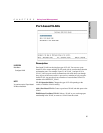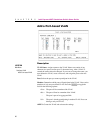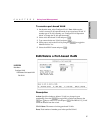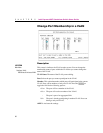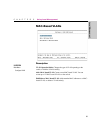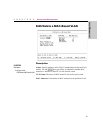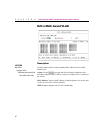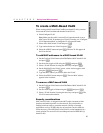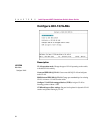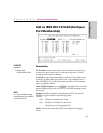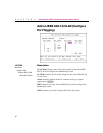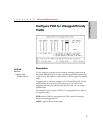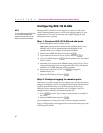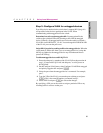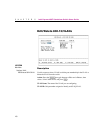
93
Using Local Management
CHAPTER 5
Local Management
To create a MAC-Based VLAN
When creating a MAC-based VLAN, unlike port-based VLANs, you must
first create the VLAN and then add members to the VLAN.
1 Select Configure VLAN.
Note: Make sure the switch’s current VLAN operation mode is set to
MAC-based VLAN. If another type of VLAN is running, see “Configure
VLAN Operation Mode” to change the VLAN operation mode.
2 Select Add a MAC-based VLAN and press e.
3 Type a name for the new VLAN and press e.
4 Select the APPLY button and press e. The new VLAN appears in
the list on the left.
To add MAC addresses to a MAC-based VLAN
1 On the Configure VLAN menu select Edit/Delete a MAC-based VLAN
and press e.
2 Set the Action toggle to Edit using the z and press e.
3 Select a VLAN from the list using the arrow keys and press e.
4 On the Edit MAC-based VLAN screen, set the Action toggle to Add
using the z and press e.
5 Type the MAC address you want to add to the VLAN.
6 Select the APPLY button and press e. The new MAC address
appears in the list below.
To remove a MAC-based VLAN
1 On the Configure VLAN menu select Edit/Delete a MAC-based VLAN
and press e.
2 Set the Action toggle to Delete using the z and press e.
3 Select a VLAN from the list using the arrow keys and press e. The
VLAN is removed from the list.
Security considerations
MAC-based VLANs, as designed on the 460T switch, are meant to limit
broadcast and multicast traffic over the network. The switch relies on
limiting broadcast traffic to constrain network visibility of network
applications (such as TCP/IP) that rely on broadcasts (such as ARP) for
station discovery. The 460T MAC-based VLANs are not intended to be a
secure solution. For secure VLANs use either port-based or IEEE 802.1Q-
based VLANs.



